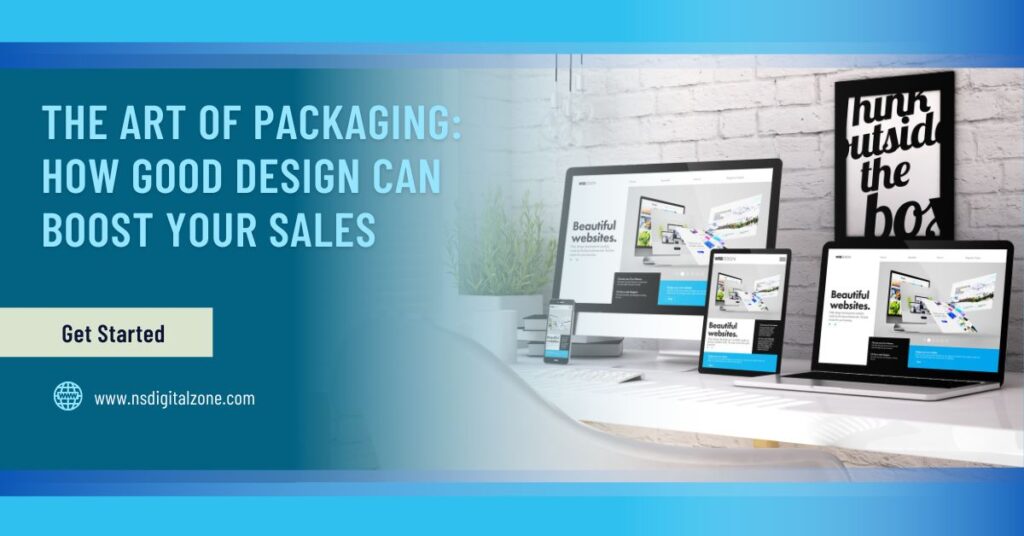Packaging design is an often overlooked, yet crucial, element of a product’s success in today’s highly competitive marketplace. While the product inside the box or bottle is undoubtedly important, the packaging is the first point of contact between a brand and its consumer. In many cases, it is the packaging that makes the initial impression, catching the eye, sparking curiosity, and influencing a purchasing decision. In fact, packaging design plays such a significant role in shaping consumer behavior that it has become a core part of branding and marketing strategies for businesses worldwide. Good packaging doesn’t just serve a functional purpose; it elevates the entire consumer experience, reinforces the brand identity, and ultimately boosts sales. In this article, we’ll explore how excellent packaging design can increase brand recognition, enhance perceived value, build customer loyalty, and lead to a measurable increase in sales.
1. First Impressions Matter: Attracting Consumer Attention
In the fast-paced world of retail and e-commerce, consumers are bombarded with an overwhelming number of options. Whether it’s a grocery store shelf, an online marketplace, or a boutique display, the sheer volume of choices can be paralyzing. When a shopper is confronted with so many products, they typically make decisions within seconds, often based on aesthetics, attractiveness, or the emotional impact of the packaging. This is where good packaging design can make all the difference. A well-designed package stands out and draws attention in a crowded marketplace.
For instance, think about how brightly colored packaging or innovative shapes can catch a consumer’s eye. Packaging that plays with unusual materials, textures, or forms can help your product stand out on the shelf. An elegantly designed logo, coupled with visually appealing elements, invites a closer look. Even subtle elements, like the type of paper or the design of a seal, can be used to differentiate a product from its competitors. Consumers are more likely to choose a product that has a design that visually excites them or aligns with their tastes and preferences. The psychological effect of being attracted to aesthetically pleasing packaging is powerful and can prompt impulse buys—an important factor for any brand looking to drive sales.
2. Reinforcing Brand Identity and Values
Packaging design does more than just catch the eye—it is a direct reflection of the brand identity. Consistent, high-quality packaging that aligns with a company’s core values can help build brand recognition and foster customer loyalty. A product’s packaging should reflect the essence of the brand, from its personality to its values and mission. For example, a luxury skincare brand might opt for minimalist, high-end packaging with sleek lines, metallic finishes, and sophisticated typography, emphasizing elegance and exclusivity. On the other hand, a sustainable brand might use eco-friendly materials, earthy tones, and simple designs to reflect its commitment to the environment.

The design choices you make—colors, typography, materials, and imagery—create an emotional connection between the consumer and the brand. Consumers often associate certain colors and design elements with particular emotions or qualities. For instance, green might be used to symbolize eco-friendliness, blue for trust and reliability, or gold for luxury and quality. By using packaging to communicate these values, brands can ensure that customers immediately recognize the ethos and personality of the brand, even before they have opened the product.
A great example of this is how Apple’s product packaging—simple, elegant, and minimalist—reinforces its reputation for innovation and high-end quality. When customers purchase an Apple product, the packaging is an experience in itself, one that speaks to the premium nature of the brand. Whether customers are buying in-store or receiving a delivery at home, the packaging serves as a reminder of the brand’s values and reinforces its positioning as a top-tier, user-centric brand.
3. Increasing Perceived Value
Good packaging design has the power to elevate a product’s perceived value. In a market where consumers are constantly comparing prices and seeking value for their money, packaging is a key factor that shapes how much a product is “worth” in the eyes of the consumer. If a product is packaged well—whether that means in a way that feels luxurious, functional, or unique—it can give the impression of higher quality. This perception of value is particularly important when selling premium or high-end products.
For example, imagine a consumer considering two similar products—a bottle of artisanal olive oil. One is packaged in a plain, mass-produced plastic bottle, while the other is in a sleek glass bottle with detailed labeling, a sophisticated color palette, and an intricate logo. Even though both products might be of similar quality, the consumer will likely perceive the second product as more premium and is more inclined to pay a higher price for it. The packaging design, in this case, adds a sense of quality and exclusivity that increases the perceived value of the product.
This concept applies to all industries—from cosmetics to food and beverages, to fashion and tech gadgets. Consumers are more willing to pay a premium for products that are packaged in a way that aligns with their expectations of quality. By investing in packaging that communicates sophistication, quality, and uniqueness, companies can boost the perceived value of their products and justify higher price points.
4. Enhancing Functionality and Convenience
While aesthetics are important, functionality is equally critical in packaging design. Packaging needs to be practical and convenient for the consumer. If the packaging is difficult to open, doesn’t protect the product properly, or is not user-friendly, it can negatively impact the overall customer experience. In 2025 and beyond, functionality and convenience will play a central role in packaging design, with brands striving to create packaging solutions that enhance usability and improve the customer experience.
Consider the rise of resealable pouches, easy-to-carry packaging, or innovative closures that ensure freshness. Consumers are increasingly looking for packaging that is easy to handle, store, and dispose of. For instance, food products with eco-friendly, biodegradable packaging or reusable containers not only demonstrate a brand’s commitment to sustainability but also meet consumers’ demand for practical solutions. Packaging designs that make life easier, whether through portability, portion control, or easy access, can build brand loyalty by enhancing the user experience.
Additionally, packaging that is easy to open and reseal, or that provides added convenience, such as squeezable tubes or ergonomic handles, enhances the overall product experience. When packaging is both functional and convenient, it can create a positive and lasting impression that encourages repeat purchases.
5. Encouraging Customer Engagement and Building Brand Loyalty
In today’s hyper-competitive marketplace, engaging customers beyond the product is essential for building long-term relationships and fostering brand loyalty. Packaging plays a central role in this engagement. Interactive packaging designs that invite consumers to connect with the brand through QR codes, personalized messages, or augmented reality experiences are becoming more popular. These kinds of packaging solutions create an interactive experience that deepens the connection between the brand and its audience.
For example, a cosmetics brand might include a personalized message on the packaging, thanking customers for their purchase or offering skincare tips. A beverage brand could include a QR code that leads to a digital experience, such as exclusive content, a loyalty program, or a promotional offer. By making the packaging part of a broader, interactive experience, brands can engage consumers in a meaningful way and encourage brand loyalty.
Customer engagement doesn’t stop at the point of purchase. Packaging that encourages social sharing, like a hashtag or user-generated content incentive, can leverage social media to increase brand visibility and reach. In a world where consumers are increasingly seeking brands that align with their values, offering packaging that engages them emotionally and intellectually can drive long-term loyalty and increase the chances of repeat sales.
Conclusion
In an age where consumer choices are influenced by countless factors, packaging design is one of the most powerful tools available to brands. Good packaging does more than just protect a product—it tells a story, communicates the brand’s values, and creates an emotional connection with consumers. By catching attention, reinforcing brand identity, increasing perceived value, enhancing functionality, and fostering customer engagement, packaging design can directly impact sales and brand success. Whether it’s through innovation, sustainability, or simply offering a better user experience, brands that invest in thoughtful and creative packaging are more likely to stand out in a crowded market and build a loyal customer base. Ultimately, packaging is not just about what’s inside the box—it’s about creating a complete experience that keeps customers coming back for more.











